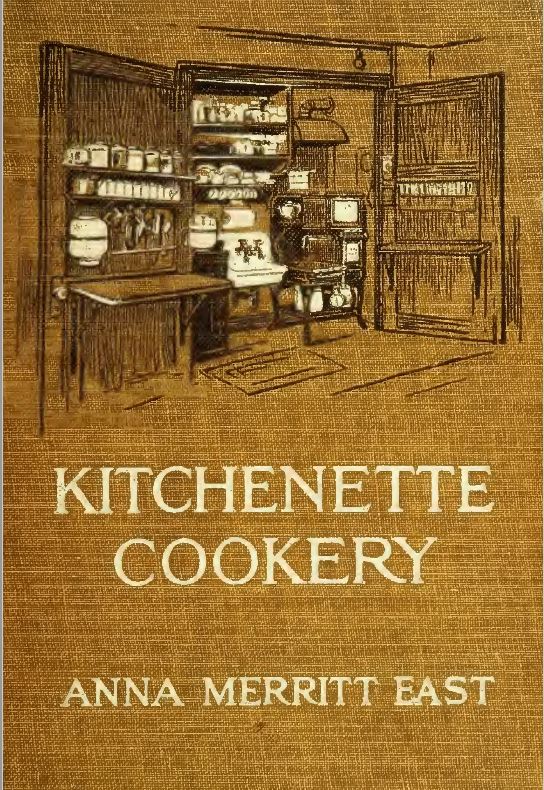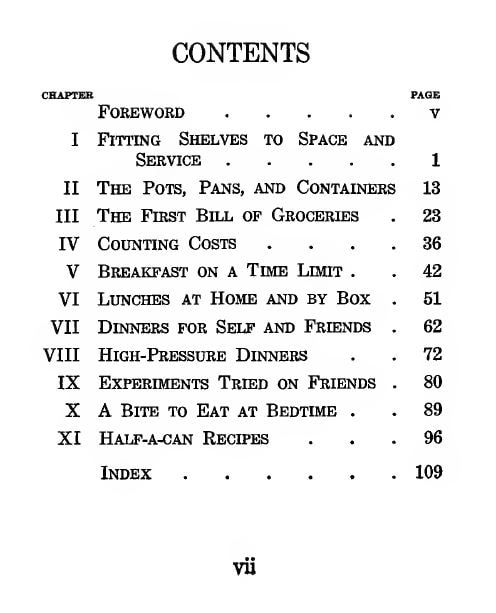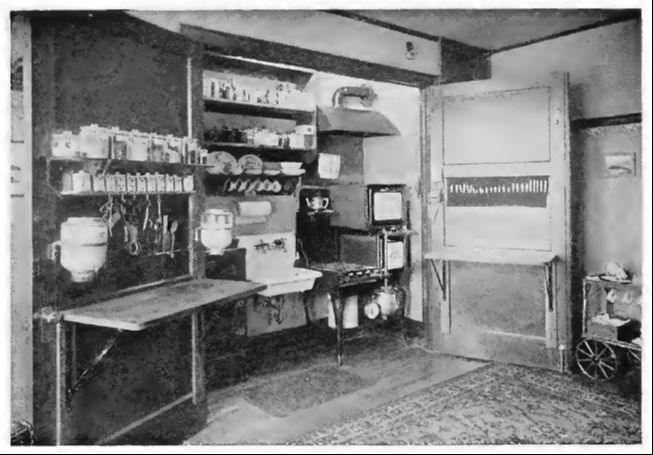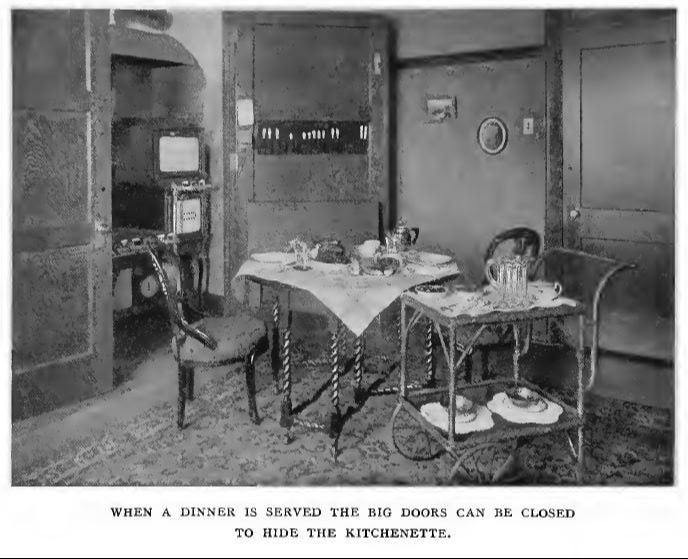|
Friend and Patreon patron Anna Katherine posted the most fascinating article the other day. Architectural historian Sarah Archer (so many Sarahs in history work!) has written a great history of the Frankfurt Kitchen. What is the Frankfurt Kitchen, you may ask? Well, you'd be better off just reading the article, but to summarize briefly, it was invented by Austrian architect Margarete Schütte-Lihotzky (1897–2000), who was helping to redesign apartment living in European nations recovering from bombing. Her kitchen was a model of efficiency based on the galley kitchens of railroad cars (although, it should be noted that the term "galley kitchen" was first used on ships). So why am I writing about this now? Because I've long had a fascination with the time of transition in American history when ordinary middle-class Americans had to shift from having live-in servants to doing their own work. And when "young brides" were thrown to the winds of married life with a high school or college education, but little idea of how to manage things on their own. Enter, "Kitchenette Cookery," by Anna Merritt East, originally published in May, 1917. I stumbled across Kitchenette Cookery on the Internet Archive (bless it forever), and it's a delightful snippet of life at the start of World War I (for the US, anyway). Anna Merritt East graduated from the University of Nebraska in 1912 and was, for a time, the "New Housekeeping Editor" for the Ladies' Home Journal. Unfortunately that's about all I can find out about her and "Kitchenette Cookery." The book really is designed for young women setting up a household for the first time, probably on a tight budget. Not only are the first chapters about setting up and kitting out the kitchenette, there are also two whole chapters on shopping and budgeting. But the recipe chapters are my favorites. "Breakfast on a Time Limit" talks about using the apartment building's hot water system to help hurry up coffee percolating and how to get a hot breakfast on the table in time for the husband to catch the "bus" to work. "High-Pressure Dinners" is a great deal about Anna's beloved pressure-cooker, with which she happily entertains guests who, of course, watch her cook in her tiny kitchen. The book itself is delightful from a historical standpoint, although sadly it has some rather poor reviews on Goodreads and elsewhere. Unlike many other books from the period, it has no real introduction to speak of, so sadly we get no real idea of where Anna's kitchen is, or if this is her real, everyday kitchen, although it appears so. Her kitchen, pictured above, is really just a closet with two very large doors. The door on the left serves as a sort of Hoosier cupboard, with flour storage/sifter, a folding wooden cutting board/work surface, and narrow shelves holding spices and what appear to be other baking supplies. Another folding wooden shelf lines the other door, with what appears to be an ingenious fabric pocket for silverware. Within the closet it an open shelf for dishes above the small sink, with what appears to be a roll of paper towels above. The tiny gas stove is at right and tucked into the corner by the front door (off frame at right) is a rolling tea cart. Here we see one door closed to illustrate how the kitchen can be closed off completely when time to dine at the tiny table, also folding. The tea cart is also in use for service. Although ingenious, this really is a "kitchenette" in the truest sense of the word - a kitchen in almost miniature, designed to provide the most basic functions. Although there is no floor plan for the whole apartment, it really must be either a one bedroom or studio. Apartments in large Eastern cities (this one is presumably in Boston) were often carved up out of former mansions or multi-level apartments (as they still are today), and thus were often cramped into small spaces not designed to be whole living quarters. This is another favorite chapter, in which Anna discusses the awful occurrence of having half a can of whatever - usually a vegetable - left over from making dinner for just two. Anna writes, "One of the difficulties of using canned goods in cooking for one or two is that only part of a can can be eaten at one time, and we do not always know just what to do with the rest. Because I found this trying, I began to play tricks on my canned goods and reduced some of my old-time standard recipes to fit my smaller pans. In this way I learned a variety of ways for using each can, so that there is neither waste nor a needless repetition of dishes. With the necessarily small refrigerator of a kitchenette, it is likewise impossible to keep a lot of left-overs, so by using these recipes I avoid them." My other favorite chapter (technically second-to-last, but seeming more apropos to be the end to this little blog post), is "A Bite to Eat at Bedtime," because who doesn't want a midnight snack these days? Her recipes mostly involve a lot of canned seafood, but I thought this fascinating little onion and cream cheese sandwich might actually be delicious, although serving with coffee is dubious - I think a cold beer or cider might be better. Of course, Anna was probably a good Prohibitionist, because as far as I can tell, there's nary a mention of wine or spirits in this little book. If you liked "Kitchenette Cookery" as much as I do, you can download the whole book from the Internet Archive. Funnily enough, my little kitchen (although MUCH bigger than Anna's) is a roomy galley kitchen. My little house was built about 1941 and out of bits of older houses (narrowboard floors and Victorian glass doorknobs, plus old-fashioned paned wooden windows, and a bluestone fireplace on a side porch), so the galley kitchen may have been inspired by Margarete Schütte-Lihotzky and her Frankfurt Kitchen! What is your kitchen like? Do you have an enormous roomy one? Or a tiny kitchenette like Annas? Let me know in the comments! And, as always, if you liked this post, consider becoming a member or joining us on Patreon. Members and patrons get special perks like access to members-only content.
2 Comments
Anna Katharine
3/23/2020 03:18:28 pm
This is fantastic, and I'm definitely going to download the book. I love the idea of a closet kitchen like this, though it would be hard for me to work in. I'm also fascinated that the cream cheese and onion sandwich also includes mayo *and* butter! that's a lot of creamy/fatty components... I'd worry the veg would slide right out! :D
Reply
3/23/2020 06:04:45 pm
Thanks, Anna Katherine! It's so funny that you posted the article right after I had found this little cookbook! They went perfectly together.
Reply
Your comment will be posted after it is approved.
Leave a Reply. |
AuthorSarah Wassberg Johnson has an MA in Public History from the University at Albany and studies early 20th century food history. Archives
July 2024
Categories
All
|







 RSS Feed
RSS Feed